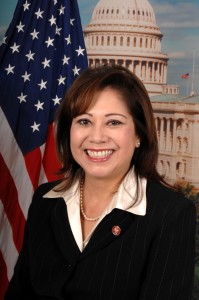
Twelve FAQs About the New York Interest Assessment Surcharge
As previously
announced, New York has assessed most employers an Interest Assessment Surcharge (IAS). The
New York Department of Labor has posted the following twelve FAQs about the IAS.
1. Why is the IAS being assessed?
Due to the high rate of unemployment, New York, as well as many other states, had to borrow money from the federal government in order to meet unemployment insurance (UI) benefits obligations. Normally, there should be sufficient revenues generated from quarterly UI employer tax collections to repay the federal loan in time to avoid interest charges. As a result of the recession there have been insufficient revenues from unemployment insurance (UI) taxes to satisfy the loans and to avoid the interest assessment. In 2009 and 2010, the federal government provided interest-free loans to states with insolvent Trust funds. Thus far, Congress has not extended the interest-free loan provisions for 2011. Therefore, New York owes approximately $95 million in interest for this year, which must be paid by September 30, 2011. In order to pay the interest due for 2011 on these federal loans, New York State is required by state law to assess a temporary charge on employers called the Interest Assessment Surcharge, or IAS.
2. What happens if the interest is not paid to the federal government?
Failure to pay the interest due can have severe consequences. New York’s Unemployment Insurance Program could lose its federal certification, which would result in employers in the state losing eligibility for a credit of up to 5.4% against the Federal Unemployment Tax Act (FUTA) tax. This would cause a very large and sudden spike in employer payroll taxes. In addition, the federal government can withhold administrative funds needed to operate New York’s Unemployment Insurance Program.
3. Isn’t the federal government waiving the interest?
The American Recovery and Reinvestment Act (also known as the Recovery Act) provided interest-free loans to New York and other states with insolvent Trust Funds during calendar years 2009 and 2010. Thus far, Congress has not extended the interest-free loan provisions into 2011. Should Congress extend the interest-free loan provision, we will either credit the employer’s account or refund the money paid.
4. What is the section of the law which imposes the IAS?
The section of the State Labor Law is Article 18, Title 6, Section 581-d. This can be found by visiting our website at www.labor.ny.gov. Employers were previously charged an IAS under this law in 2003, 2004, and 2005.
5. Are all employers required to pay the IAS?
All employers who pay unemployment insurance (UI) tax to the State are liable for the IAS. State and local government and not-for-profit employers who self-insure for UI purposes are not liable for the IAS.
6. How was my IAS calculated?
Your IAS was calculated using the taxable wages for the current payroll year (the fourth quarter of 2009 through the third quarter of 2010) and multiplying those wages by the IAS rate of 0.25%. The maximum amount that most employers will be assessed is $21.25 per employee.
7. Will my tax rate increase as a result of IAS?
No. IAS does not affect an employer’s experience rating account.
8. When is my payment of the IAS due? Can I get an extension?
Payment is due August 15, 2011. As the federal government has not granted an extension of the interest payment, extensions on the due date cannot be granted.
9. Why didn’t I receive the notice of the IAS earlier?
Because multiple bills were being considered by Congress to extend the interest waiver position into the current year, it was prudent to wait for Congressional resolution. Unfortunately, to date, Congress has not enacted an extension of this provision.
10. Whom should I make my check payable to and where do I send the payment?
Checks should be made payable to: NYS Unemployment Insurance and sent to: NYS Unemployment Insurance, PO Box 4301, Binghamton, NY 13902-4301.
11. Is this a one-time billing and what happens if I do not pay my IAS?
IAS will be billed annually until the loans to the federal government have been paid. IAS is subject to the same collection processes as contributions due. This would include legal actions to enforce the debt.
12. What if I did not receive an IAS bill or have questions regarding the IAS bill?
If you have any questions, please call the Employer Accounts Adjustment Section of the Unemployment Insurance Division at (888) 899-8810 or go to the agency website at www.labor.ny.gov.
Contact Vision Payroll Today
New York clients who have further questions on the IAS should contact Vision Payroll.












Vision Payroll